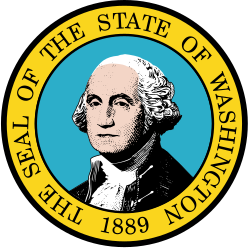| |||||||||||||||||||||||||||||||||||||
25 of 49 seats in the Washington State Senate 25 seats needed for a majority | |||||||||||||||||||||||||||||||||||||
|---|---|---|---|---|---|---|---|---|---|---|---|---|---|---|---|---|---|---|---|---|---|---|---|---|---|---|---|---|---|---|---|---|---|---|---|---|---|
| |||||||||||||||||||||||||||||||||||||
 Results: Democratic gain Democratic hold Republican hold Democrat caucusing with Republicans hold No election | |||||||||||||||||||||||||||||||||||||
| |||||||||||||||||||||||||||||||||||||
| Elections in Washington (state) |
|---|
 |
The 2018 Washington State Senate elections took place as part of the biennial United States elections. Washington state voters elected state senators in 25 of the state's 49 Senate districts. The other 24 state senators were not up for re-election until the next biennial election in 2020. State senators serve four-year terms in the Washington State Senate. A statewide map of Washington's state legislative districts is provided by the Washington State Legislature here, Archived 2018-10-24 at the Wayback Machine .
Contents
A top two primary election on August 7, 2018, determined which candidates appear on the November 6 general election ballot. Each candidate is allowed to write in their party preference so that it appears as they desire on the ballot. [1]
Following the 2016 state senate elections, Republicans maintained effective control of the Senate, 25–24 because self-identified Democrat Tim Sheldon caucuses with the Republicans. However, in 2017 Democrats regained control of the Washington State Senate after Democrat Manka Dhingra won a special election in Washington's 45th legislative district.
Democrats expanded their caucus's majority to 28–21 by further flipping the 26th, 30th, and 47th districts. Tim Sheldon was reelected as a Democrat, but continued to caucus with the Republicans.

